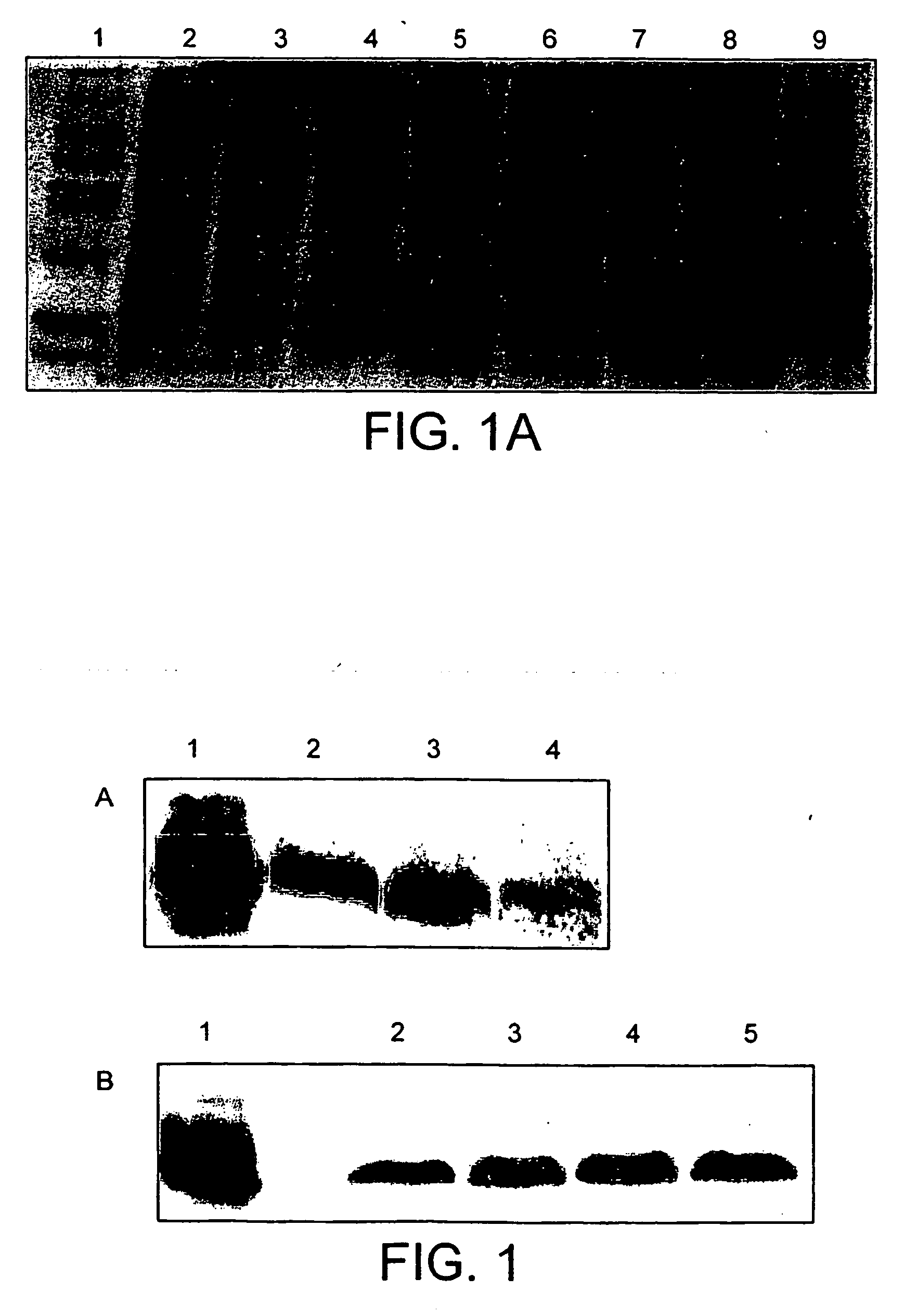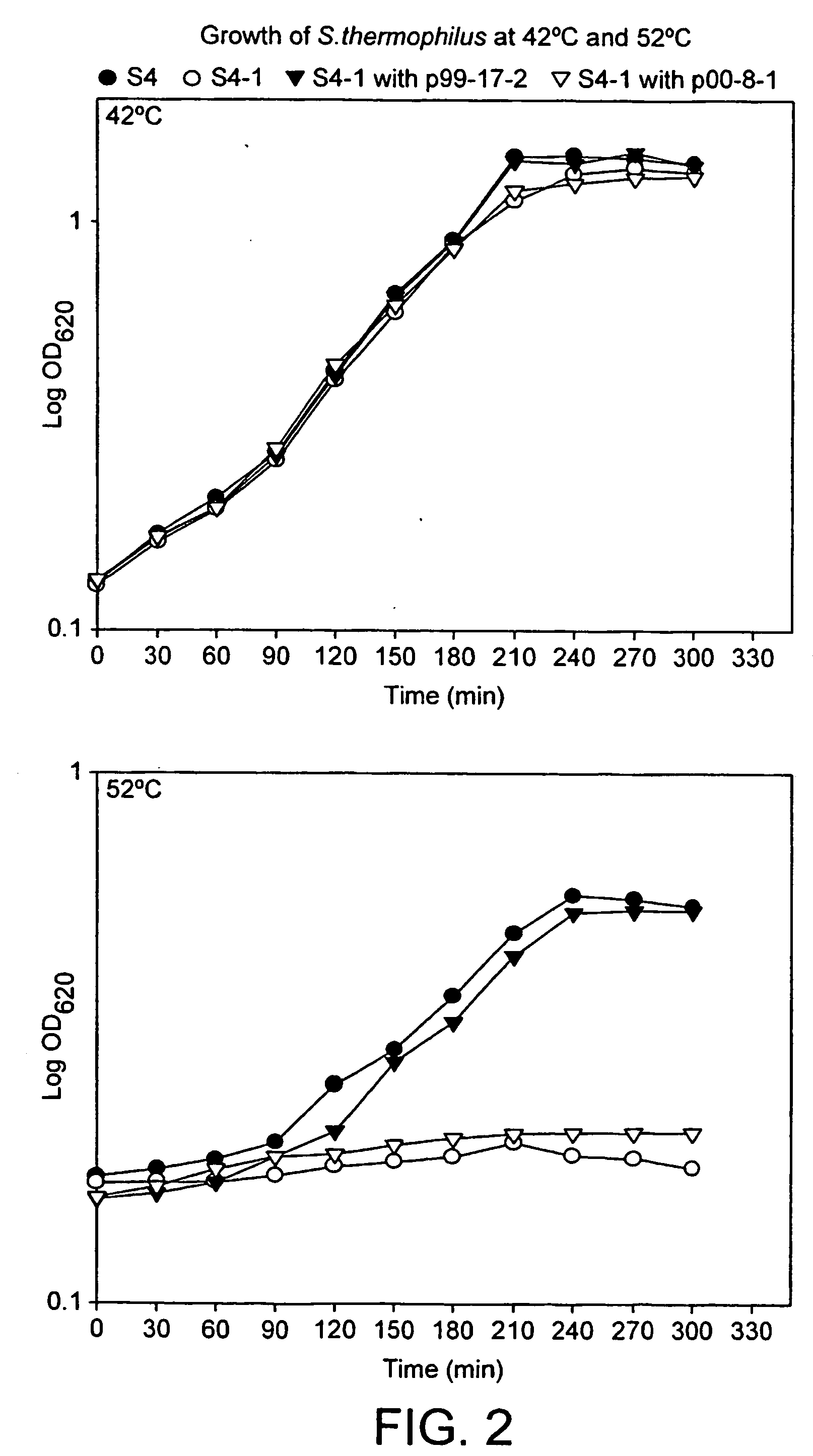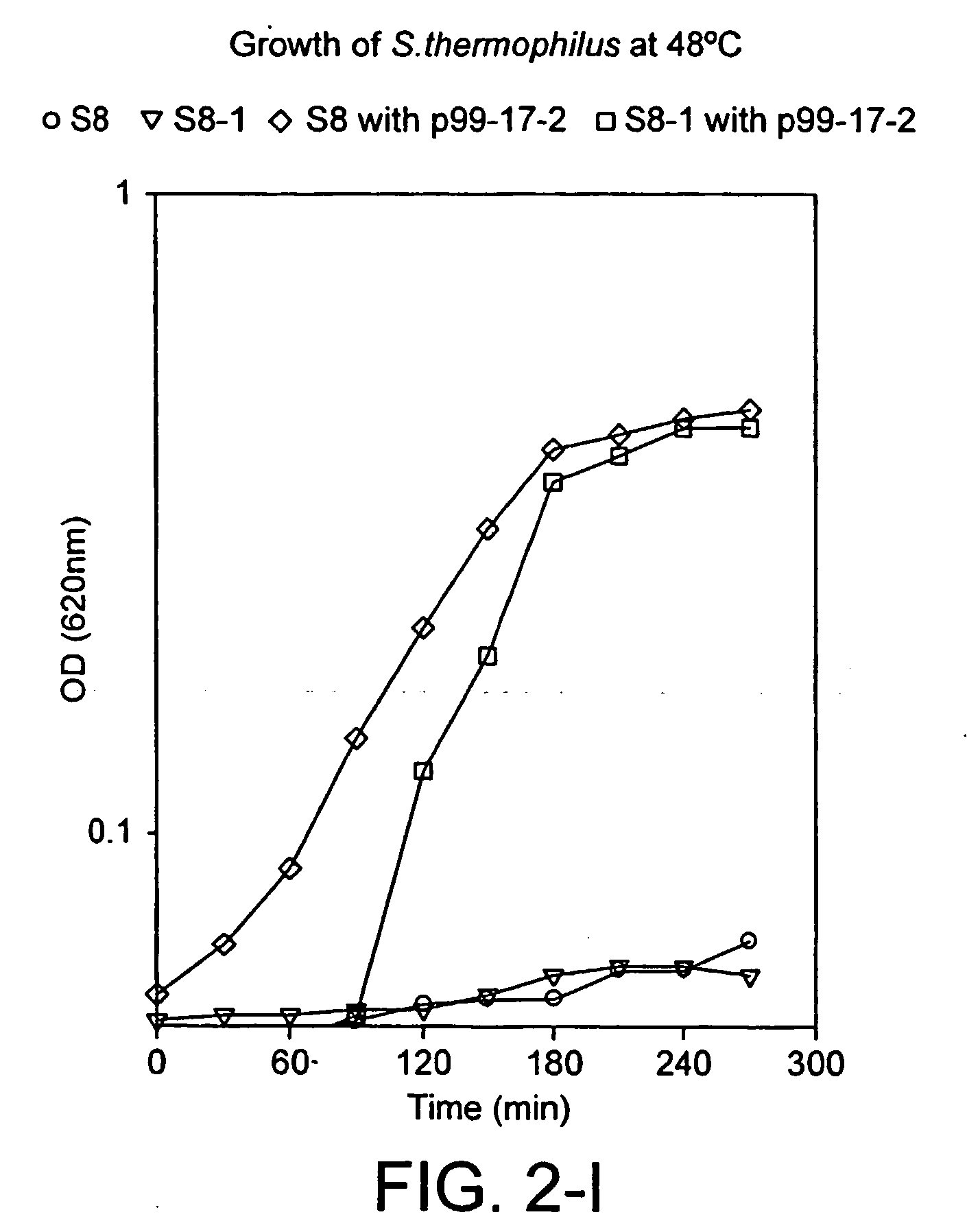Method of improving food fermentation procedures
- Summary
- Abstract
- Description
- Claims
- Application Information
AI Technical Summary
Benefits of technology
Problems solved by technology
Method used
Image
Examples
examples
[0192] The present invention will now be illustrated by way of examples where reference is made to the following figures and tables.
[0193]FIG. 1.A. Shows an SDS-PAGE
[0194]FIG. 1.B. Shows a Western Blot
[0195]FIG. 2.A. and B. Show a graphs.
[0196]FIG. 2-1. Shows a graphic representation of log OD620
[0197]FIG. 2-2. Shows a graph.
[0198]FIG. 3. Shows a schematic.
[0199]FIG. 4. Shows a graphic representation of % surviving cells
[0200]FIG. 5. Shows a graphic representation of log colony forming units (%)
[0201]FIG. 6.A. Shows a graph
[0202]FIG. 6.B. Shows a graph
[0203]FIG. 6.C. Shows a graph
[0204]FIG. 7. Shows a graphic representation of log colony forming units / ml
[0205]FIG. 8. Shows a graph
[0206]FIG. 9. Shows sequence listings
[0207] Table 1. Bacterial strains and bacteriophage
[0208] Table 2. Change of the pH-values of yoghurt produced with S. thermophilus S4 and Lactobacilus bulgaricus 92063 at 42° C. and 50° C. during storage at 4° C.
The Figures Explained in Greater Detail. ...
PUM
| Property | Measurement | Unit |
|---|---|---|
| Temperature | aaaaa | aaaaa |
| Temperature | aaaaa | aaaaa |
| Temperature | aaaaa | aaaaa |
Abstract
Description
Claims
Application Information
 Login to View More
Login to View More - R&D
- Intellectual Property
- Life Sciences
- Materials
- Tech Scout
- Unparalleled Data Quality
- Higher Quality Content
- 60% Fewer Hallucinations
Browse by: Latest US Patents, China's latest patents, Technical Efficacy Thesaurus, Application Domain, Technology Topic, Popular Technical Reports.
© 2025 PatSnap. All rights reserved.Legal|Privacy policy|Modern Slavery Act Transparency Statement|Sitemap|About US| Contact US: help@patsnap.com



